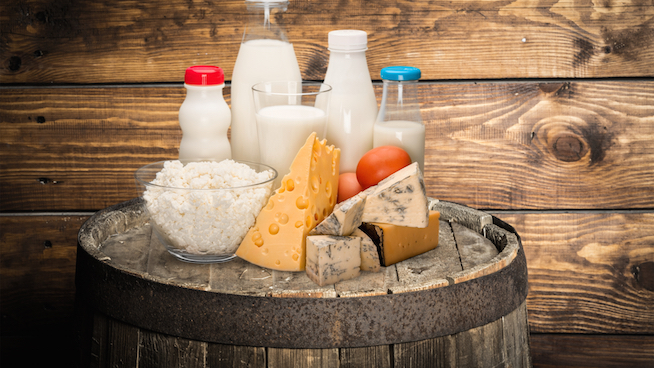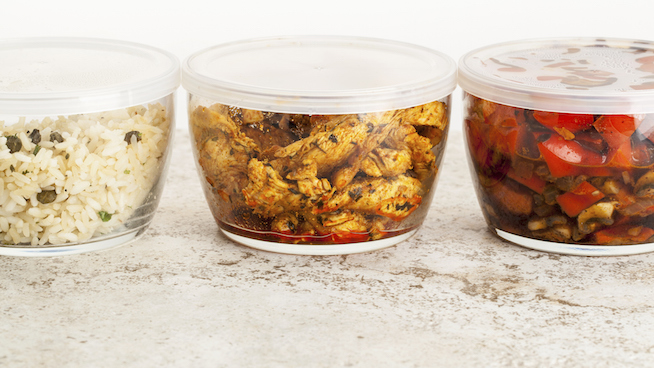How to Eat Like a Tennis Pro
The longest tennis match in history lasted a staggering 11 hours and five minutes. This is certainly not the norm, but as a tennis player, you must be ready to compete for every point during long and grueling matches.
This means you must focus on your nutrition. The average tennis player burns up to 800 calories per hour during competition. Energy is paramount.
You may not play at a professional level, but fueling like a pro is simple. Follow these four tips to feel fresh and energized throughout a match.
Eat Fruit Before and After Your Match
Revamp your pre-match fuel and post-match recovery by eating fruit. Fruit carbohydrates energize your muscles and provide antioxidants to repair cell damage and reduce exercise inflammation. Many fruits also have fiber, which aids in digestion.
Any fruit you can eat is better than nothing. However, it’s best to focus on potassium-rich options, such as bananas, pineapples, kiwifruit, and dried apricots, plums and dates. Potassium is essential for muscle contractions during exercise, and it helps the muscles relax when you’re finished.
Tip: Pair a banana or dates with peanut butter, or pineapple or kiwifruit with cheese, for a more energetic snack. Your muscles will thank you!
When to eat it: One or two servings before and/or after a match or workout.
Ditch Unhealthy Food Bars
On-the-go “fitness bars” clutter the market, but not all are healthy. Many are loaded with sugar and unnatural ingredients. Always look at the nutrition label before making your selection.
KIND Bars are my go-to option for tennis players. They are made with wholesome ingredients like nuts, dried fruit and honey, which give players the energy they need to make it through a long match.
Tip: Sprinkle KIND granola into Greek Yogurt for a protein- and carb-rich snack.
When to eat it: Between meals or before a match.
Full Disclosure: I worked with my friends at KIND Snacks on this list of recipes.
Chug Some Chocolate Milk
Yes, you can and should drink chocolate milk. A full glass of this delicious beverage provides the perfect blend of carbohydrates and protein to replenish muscle energy stores (glycogen) and stimulate muscle growth and recovery. The phosphorus in milk reduces muscle soreness after an intense match, which is guaranteed to put a smile on your face.
Tip: Create a similar drink by adding two tablespoons of honey to 1- or 2-percent milk to boost its carbohydrate content.
When to drink it: 30 minutes after a match or workout or as part of a meal to boost your calorie intake.
Eat Power Protein
Protein-rich foods do more than build muscle. (I’m thinking of protein powder). Ideally, any source of protein should also contain omega-3 fatty acids (i.e., healthy fats) to reduce inflammation, alleviate muscle soreness and improve joint and brain health. My favorite options include tuna, salmon, anchovies and lamb.
Tip: Sauté anchovies with tomatoes, onions and garlic and use it as a spread for sandwiches and wraps. Another favorite is my easy lamb korma with vegetables and coconut quinoa.
When to eat it: Any meal, or as part of your recovery meal.
Read more:
- Nutrition Tips for Young Tennis Players
- Healthy Tennis Diet
- Elevate Your Game With Pre- and Post-Workout Nutrition
Sources:
- USTA.com
- ACSM.org (Carbs)
- ACSM.org (Sports Nutrition)
- UMM.edu (ALA)
- UMM.edu (Phosphorous)
- Roy, B. (2008). “Milk: the new sports drink? a review.” The Journal of the International Society of Sports Nutrition, 1550.
RECOMMENDED FOR YOU
MOST POPULAR
How to Eat Like a Tennis Pro
The longest tennis match in history lasted a staggering 11 hours and five minutes. This is certainly not the norm, but as a tennis player, you must be ready to compete for every point during long and grueling matches.
This means you must focus on your nutrition. The average tennis player burns up to 800 calories per hour during competition. Energy is paramount.
You may not play at a professional level, but fueling like a pro is simple. Follow these four tips to feel fresh and energized throughout a match.
Eat Fruit Before and After Your Match
Revamp your pre-match fuel and post-match recovery by eating fruit. Fruit carbohydrates energize your muscles and provide antioxidants to repair cell damage and reduce exercise inflammation. Many fruits also have fiber, which aids in digestion.
Any fruit you can eat is better than nothing. However, it’s best to focus on potassium-rich options, such as bananas, pineapples, kiwifruit, and dried apricots, plums and dates. Potassium is essential for muscle contractions during exercise, and it helps the muscles relax when you’re finished.
Tip: Pair a banana or dates with peanut butter, or pineapple or kiwifruit with cheese, for a more energetic snack. Your muscles will thank you!
When to eat it: One or two servings before and/or after a match or workout.
Ditch Unhealthy Food Bars
On-the-go “fitness bars” clutter the market, but not all are healthy. Many are loaded with sugar and unnatural ingredients. Always look at the nutrition label before making your selection.
KIND Bars are my go-to option for tennis players. They are made with wholesome ingredients like nuts, dried fruit and honey, which give players the energy they need to make it through a long match.
Tip: Sprinkle KIND granola into Greek Yogurt for a protein- and carb-rich snack.
When to eat it: Between meals or before a match.
Full Disclosure: I worked with my friends at KIND Snacks on this list of recipes.
Chug Some Chocolate Milk
Yes, you can and should drink chocolate milk. A full glass of this delicious beverage provides the perfect blend of carbohydrates and protein to replenish muscle energy stores (glycogen) and stimulate muscle growth and recovery. The phosphorus in milk reduces muscle soreness after an intense match, which is guaranteed to put a smile on your face.
Tip: Create a similar drink by adding two tablespoons of honey to 1- or 2-percent milk to boost its carbohydrate content.
When to drink it: 30 minutes after a match or workout or as part of a meal to boost your calorie intake.
Eat Power Protein
Protein-rich foods do more than build muscle. (I’m thinking of protein powder). Ideally, any source of protein should also contain omega-3 fatty acids (i.e., healthy fats) to reduce inflammation, alleviate muscle soreness and improve joint and brain health. My favorite options include tuna, salmon, anchovies and lamb.
Tip: Sauté anchovies with tomatoes, onions and garlic and use it as a spread for sandwiches and wraps. Another favorite is my easy lamb korma with vegetables and coconut quinoa.
When to eat it: Any meal, or as part of your recovery meal.
Read more:
- Nutrition Tips for Young Tennis Players
- Healthy Tennis Diet
- Elevate Your Game With Pre- and Post-Workout Nutrition
Sources:
- USTA.com
- ACSM.org (Carbs)
- ACSM.org (Sports Nutrition)
- UMM.edu (ALA)
- UMM.edu (Phosphorous)
- Roy, B. (2008). “Milk: the new sports drink? a review.” The Journal of the International Society of Sports Nutrition, 1550.











